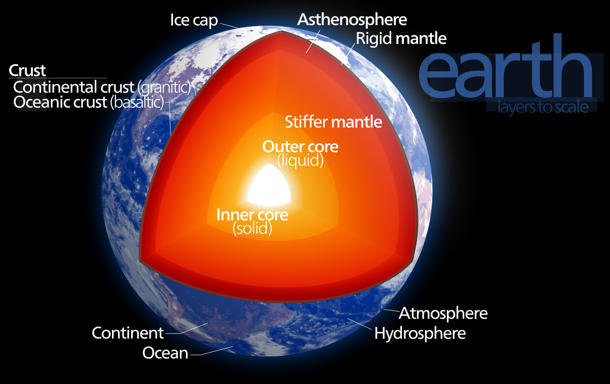The Earth’s core is separated into two different layers. At the centre is the solid inner core, which is surrounded by the liquid outer core — both made up of a mixture of nickel and iron. Scientists figured out the structure of the two layers decades ago, based on watching seismic waves from earthquakes passing through the planet, and they also discovered that it is circulations in the hot, liquid metal of the outer core that generate the Earth’s magnetic field. There are some things about the core that have remained a mystery, though. A study from 2005 revealed that, although the inner core rotates in the same direction as the surface, it actually rotates slightly faster than the surface. That strange result joins another curious finding, from back in 1692, when astronomer Edmond Halley (of Halley’s Comet fame) discovered that the Earth’s magnetic field ‘drifts’ towards the west by a few degrees every decade.
A new study has finally offered an explanation for these two mysteries, tying everything together at last. It started with researchers not only confirming that the inner core rotates faster than the surface, but also finding that the outer core rotates in the opposite direction. To find out what’s going on, they used the Monte Rose supercomputer to run a simulation that was roughly 100 times more accurate than any previous model of the Earth’s core. The simulation revealed that it’s the Earth’s magnetic field that’s causing the layers of the core to spin like they do. It’s providing an extra little push to the inner core, driving the added spin towards the east, while at the same time an equal and opposite reaction to that push is causing the ‘backward’ spin of the outer core towards the west. The added bonus from their simulation is that it solved Halley’s mystery as well. Since the outer core slowly rotates towards the west, the circulations within the liquid metal also rotate in that direction, and the magnetic field ‘drifts’ along with them.
The researchers are hoping that all of this will help scientists better understand the behavior of the core, and thus the planet’s magnetic field. –Yahoo News

 RSS Feed
RSS Feed